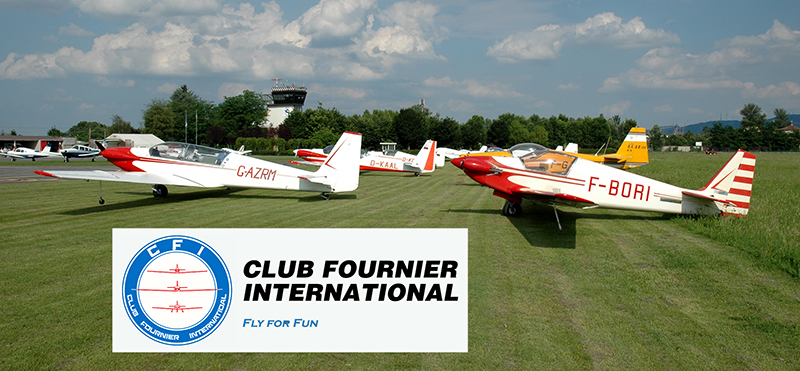The Italian Aerospace Information Web
by Aeromedia - corso Giambone 46/18 - 10135 Torino (Italy)

| MARKS | MANUFACTURER / TYPE | PILOT | S/N - YEAR OF MANUFACTURE - NOTES |
| I-OMAR | Fournier (AeroJaén) RF-5 AJ-1 Serrania | Enrico Mazza | s/n E-003 (1992) 68 HP Limbach SL 1700 E Comet engine |
| D-KOHO | Fournier (Sportavia-Pützer) RF-4D | Sylvain Gyelen | s/n 4079 (1966) |
| D-KAAL | Fournier (Sportavia-Pützer) RF-5B Sperber | Claus Maier | s/n 51075 (1989) |
| F-CAHM | Fournier (Aérostructure) RF-9 | Michel Leblanc | s/n 3 (1980), based at Chavenay-Villepreux (Paris Region) |
| F-GADE | Fournier (Avions Fournier) RF-6B-100 | Jean Paul & Marie Claire Lauvergnat | s/n 6 (1976), based at Montelucon Damerat (Auvergne) |
| HB-2005 | Fournier (Alpavia) RF-3 | Jean-Louis Brodard, Lausanne | s/n 28 (1964), ex F-BMDI until April 1969, to I-RYMO in 2019 |
| F-BORI | Fournier (Sportavia-Pützer) RF-4D | Philippe Dufay | s/n 4017 (1967), based at Saverne-Steinbourg (Alsace) |
| I-RFOS | Fournier (Sportavia-Pützer) RF-5 | Alberto Sobrero e Renato Potieri | s/n 5027 (1969), ex OH-385, based at Envie airfield |
| G-AZRM | Fournier (Sportavia-Pützer) RF-5 | Michael James Millar | s/n 511 (1972) |
| F-CNTT | Fournier (Alpavia) RF-3 | Jean Marc Czyzewski | s/n 86 (2013), based at Chateaux-Arnoux/St-Auban (Provence) |
| I-TBTA | Fournier (Alpavia) RF-3 | Roberto Parola | s/n 20 (1964), ex F-BLXF until July 2007 |
| I-TORR | Fournier (Sportavia-Pützer) RF-5 | Paolo Giovanni Cappellini, Cremona | s/n 5026 (1969) |
| I-BPLQ | Fournier (Sportavia-Pützer) RF-4D | Eugenio Lanza di Casalanza / AVAG | s/n 4136 (1970), ex F-BPLQ |
In the picture: Lineup of aircraft participating in the first Italian Fournier meeting at Turin/Aeritalia airport and the badge of Club Fournier International. (Aeromedia)
(Aeromedia, June 2013)